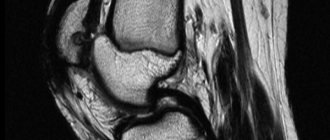Fear of touch is a phobia that is quite common these days. In medicine, the disease is called haptophobia. The pathology is also called haphefo- and thixophobia. Fear of being touched by strangers, the phobia received its main name from the Greek “hapto” - to touch.
Features of fear of human touch
Suffering from haptophobia:
- tries to avoid communicating with unfamiliar people. Does not enter elevators, rarely travels by public transport, is an infrequent visitor to shops;
- hates any touch - handshakes, friendly pats on the shoulder, hugs. Even when communicating with good friends. The exception is close relatives.
If everything is left to chance, haptophobia will progress. Gradually, a person will become unbearable to be touched even by loved ones. This will destroy personal life and lead to isolation. A person suffering from haptophobia may stop communicating with people and turn into a recluse.
Causes of fear of touch
Haptophobia often appears in people from dysfunctional, single-parent families. Parents of those suffering from fear of touch are:
- indifferent, cold people who did not pay due attention to raising a child;
- “tyrants”, whose perfectionism and constant nagging give rise to a phobia of touching;
- socially disadvantaged individuals - alcoholics, drug addicts.
Psychological trauma, often associated with physical and sexual violence, also leads to fear. Fear of touching, a phobia, affects people who became victims of a pedophile in childhood or were severely beaten by robbers.
Remember! In addition to haptophobia, victims of sexual assault often also develop asexuality.
What disorders are haptophobia symptoms of?
Fear of touch is usually not a separate pathology, but a symptom of another disease. Most often this is:
- Personality disorders:
- paranoid - pathological distrust of others;
- obsessive-compulsive - obsessive thoughts and states;
- avoidant - a pathological desire to avoid unpleasant stressful situations.
- Agoraphobia is the fear of being in places where there are a lot of people.
- Anxiety disorder (psychasthenia). The problem is characterized by extreme suspiciousness and obsessive fears.
- Serious anomalies in brain development - mental retardation, autism, dementia (senile dementia).
- Catatonic manifestations of schizophrenia. A person suffering from catatonia rejects any external influence.
Also fear:
- People who have to deal with antisocial elements and hospital patients suffer. These are doctors, police officers, social service workers. Constant contact with drug addicts, homeless people, criminals, people with serious illnesses can give rise to this problem;
- puberty (the time of puberty) is another reason for fear of even the slightest touch of other people. When the body is reconstructed, young men do not always properly control their desires. Teenagers often experience involuntary erections. It occurs at the most inopportune moment, when a young man shakes the teacher’s hand or hugs a peer. Such uncontrolled arousal causes fear of any touch.
Possible reasons
Thixophobia is difficult to understand the cause-and-effect relationships of its appearance and development. However, there are several main reasons that could potentially cause this disorder.
Fear of touch can develop against the background of other more serious psychological disorders. Among them, the most common are: depression, neuroses, obsessive states and obsessive-compulsive disorders. This category also includes retardation in intellectual development - autism, mental retardation, Down syndrome.
Thixophobia can also be a temporary phenomenon in the case of adolescence. At the time of puberty, a person does not have time to readjust and can react sharply to violation of personal boundaries. This may be a fear of unexpected reactions of the mature body, which the teenager has not yet learned to accept and control.
Any phobia can progress in most cases due to a traumatic event. The future thixophobe could be subjected to cruel treatment, physical and psychological violence, accompanied by touching.
Thixophobia may be a consequence of character. For example, introverts have difficulty letting people in and protect their boundaries. Therefore, violation of their territory is perceived very painfully.
Typical symptoms of haptophobia
Typical manifestations of fear of hugs are when:
- After touching someone else's body, a person unbearably wants to “wash his hands of the dirt.” Therefore, haptophobia often occurs together with mysophobia - an obsessive fear of becoming infected with germs;
- For many people with touch phobia, the desire to “wash themselves” arises even after indirect contact with others. For example, a person suffering from a fear of the slightest touch has an irresistible urge to rinse his mouth if he takes a couple of sips from the bottle with which he just drank;
- The haptophobe chooses closed, “monastic” clothes—even in hot weather, he will prefer a long-sleeve shirt to a light T-shirt, and trousers to shorts.
Remember! People unfamiliar with haptophobia may easily think that the person suffering from the disorder is simply too squeamish or shy, rude, or contemptuous. After all, how else can you explain that immediately after a handshake a person wipes his hands with a napkin? But in reality, this behavior is caused by a mental problem.
For a person with a fear of hugs and touches, the most ordinary manifestations of politeness and good manners cause real physical torment. When the hand of a person suffering from the disorder is touched, it seems to him that he has been doused with boiling water, dipped in freezing cold water, or “shocked” with an electric shock. This is why a “haptophobe” withdraws his hand or abruptly walks away when someone approaches him to say hello or ask a question.
What is haptophobia?
A mental disorder that is accompanied by a fear of tactile contact has several names:
Aladdinia is also a phobia, which is accompanied by a fear of being touched, but due to the fact that physical contact causes physical pain to a person.
Regardless of what the fear of touch is called, it must be diagnosed in a timely manner, the cause of its origin must be determined, and all necessary measures must be taken to solve the psychological problem.
Psychosomatic and extreme manifestations of pathology
Fear of touch has the following psychosomatic and psychoemotional manifestations:
- tachycardia, a sharp increase in pulse;
- tremor (involuntary trembling) of the arms and legs;
- I feel unbearably dizzy and feel sick;
- severe nausea and vomiting appears;
- there is a sharp loss of strength;
- severe shortness of breath caused by a panic attack;
- dissociation - the person suffering from fear ceases to “be here and now”; it seems to him that what is happening is a bad dream.
In severe cases, people with touch phobia begin to fear any strong, sharp impacts on the body:
- strong gusts of wind;
- water (showering, swimming);
- tight, overly-fitting clothing;
- haircuts, shaving.
Remember! In advanced cases, people who have developed a fear of being touched by strangers may try to automatically hit or push away.
What problems can be confused with haptophobia?
Not everyone who is touch intolerant suffers from haptophobia:
- Some people just have a very “wide” personal space. Such individuals do not tolerate familiar manners, literally keep everyone at arm's length, and try to avoid communication with unfamiliar people whenever possible;
- Also, the problem may be xenophobia, not haptophobia. Some individuals cannot tolerate the touch of representatives of races and ethnic groups that they consider “inferior” and hostile;
- Authoritarian individuals prone to perfectionism also often do not tolerate touch. For them, the highest ideal is order and cleanliness in everything, so they cannot tolerate friendly pats on the shoulder or other manifestations of informality and spontaneity;
Asexual people hate touch, since they associate tactile contact with physical intimacy.
Phobia concept
The concept of “phobia” is well known to everyone, but not everyone can coherently explain what exactly it is. Translated from Greek, “phobia” means “fear, fear.” In reality, fears and phobias are very close, but there are significant differences between them. Fear is a natural protective function of the body in the face of real danger, physiologically manifested in the release of hormones into the blood, rapid heartbeat, autonomic dysfunction, etc. An interesting fact can help to understand the nature of fear - a person is born absolutely fearless. Little children are not afraid of falling from a height, drowning in the bathtub, or touching fire with their finger. Only later does the feeling of fear come with experience, and, basically, these fears are useful. Basically, the feeling of such fear helps to escape from dangerous situations or prevent them. This feeling of fear is completely conscious and controlled by common sense and logic. Phobias are fears that are characterized by very significant stability, are not based on common sense (irrational) and are constantly present in the human psyche. Moreover, these fears most often are not of a real threat, but fears “within us.” Phobias, unlike fears, are very difficult to control by thinking and common sense.
Diagnosis and treatment methods for phobias
Only an experienced psychotherapist can cure this fear. The specialist will first try to create an accurate description of the “medical history” - all the symptoms and causes of the problem. Then the optimal treatment option will be determined:
- Hypnotherapy is one of the most effective ways to treat fear of touch. Usually 5-10 days of hypnotic sessions are enough to get rid of painful fears. One of the most famous specialists in the field of hypnosis is Nikita Valerievich Baturin, who receives clients from all over the world;
- psychoanalysis. The patient and the psychoanalyst “get to the bottom” of the cause of the pathology. A specialist helps to realize and “let go” of the phobia;
- Cognitive behavioral therapy also copes well with the problem. The psychotherapist teaches you to look at the problem differently, to see positive aspects in contacts with people;
- Group therapy is also helpful. In a group of their own kind, haptophobes gradually get used to close contact with people.
Experts also advise people with haptophobia to dance. This will help overcome the problem.
Treatment with pharmaceuticals
Fear of being touched can be caused by asexuality. This disorder is often accompanied by hormonal imbalances. The thyroid gland and adrenal glands do not produce enough hormones that cause sexual arousal, as well as the desire to communicate and make contact. In such a situation, the patient cannot do without special hormone replacement therapy.
If the problem is caused by general anxiety or some kind of personality disorder (obsessive-compulsive, avoidant, paranoid), then the specialist will prescribe tranquilizers that calm the psyche, as well as antidepressants (if symptoms of depression are present).
Irrational fear of other people's touches is a serious problem that cannot be eliminated without a specialist. Together with a psychotherapist, a person will be able to overcome fear and will again begin to enjoy close contact with other people.
Treatment of haptophobia
For mild forms of the disorder, you can seek help from a clinical psychologist who will select individual therapy. More serious phobias, accompanied by fear and problems in life, require the intervention of a psychotherapist. If the disorder is the result of mental pathologies, it is better to visit a psychiatrist.
In most cases, the intervention of a psychotherapist is sufficient to solve the problem. The specialist uses a set of methods in which he works with the patient in an individual format and analyzes every possible cause of fear. After identifying the causes and combating them, tolerance is formed - resistance to fear.
In some cases, to obtain results, a specialist may prescribe medications to the patient. This approach is used in working with people whose pathology develops against the background of neurosis or psychosis.











